It may come as a surprise, but you don’t need to complete hours and hours of continuous training to be successful in endurance sport.
No, really, science says so.
That’s not to say that volume isn’t important. In fact, you’d be silly not to train long distances if you want to succeed in long distance events such as Ironman, 3peaks, multi-stage races, ultra-marathons etc.
BUT, you may not need as much volume as you think.
The typical ratio of low intensity to high intensity to recovery training is 75:15:10 for elite endurance athletes according to a study by Laursen (2010). This means that 75% of their training volume is done at a low intensity, 15% of their volume at a high intensity, and 10% at a recovery pace. “Elite” here is categorised by runners who complete 166km/week (female) or 206km/week (male), cyclists completing >24,000km/year and rowers completing more than 1,100 hours/year of training.
Now, if you’re reading this and not accumulating the above mileage, your low intensity:high intensity training ratio should change. The reason the elites are completing 3/4s of their training at a low intensity is because their bodies will break down otherwise. Nobody can complete 206kms of running per week at a high intensity.
For those with busy work and family lives, we simply can’t devote 3 hours per day/7 days per week to training. This is where we have to train smart to maximise our training benefit. If the elites are completing 21 hours of training per week (minimum), and 15% of this time is spent at a high intensity (ie at or above threshold), then this equates to just over 3 hours of high intensity training per week.
When we say high intensity, we don’t mean a continuous 30-60 minute run going as hard as you can; we mean REALLY high intensity; the stuff you can only hold for intervals of less than 5 minutes before you’re exhausted, interspersed with recovery periods, and repeated a number of times.
We conducted an experiment on Eliza to see how much performance improvement we could get in just 4 weeks. Eliza is a recreational runner who aims to train 3-4 times per week, of which continuous training makes up most of her training time. She rarely completes interval training at a high intensity, although she pushes hard during her continuous runs.
We completed a VO2 max test and a flat 2km time trial. Then we used her data to prescribe a highly tailored training program which involved training only 3 times per week for 30 minutes per session totaling only 90 minutes of training per week.
90% of this training was completed at 95% velocity at VO2 max or above and involved intervals with a 1:1 or 2:1 work:rest ratio.
At the conclusion of 4 weeks, we conducted the same tests using the exact same protocols, and these were the results:
1. VO2 max increased 16.8% (from 44.6 to 52.1) at a lower heart rate (182 compared to 188), and at a quicker speed (12.0km/h compared to 11.0km/h)
VO2 max before training: 44.6ml/kg/min
VO2 max after 4 weeks of training: 52.1ml/kg/min
2. Her stroke volume at VO2 max (amount of oxygen ejected from the heart per beat) increased 20.6%, from 12.6ml/beat to 15.2ml/beat.
VO2 max stroke volume before training: 12.6ml/beat.
VO2 max stroke volume after training: 15.2ml/beat
3. Her fraction of expired oxygen (muscle’s ability to extract oxygen) at VO2 max improved by 9.9% from 17.63% to 17.42% (lower indicates more oxygen extraction).
FeO2 at VO2 max before training: 17.63%
FeO2 at relative pre-training VO2 max: 17.42% (lower indicates better).
4. Her functional threshold improved by 33sec/kilometre and her 2km time trial result decreased (ie improved) by 38 seconds (16.6% total improvement).
2km TT before training: 10:32.
2km TT after training: 9:54
The take home messages:
1. Intensity is so important if you want to see improvement. 15% of the elite athlete’s volume still equates to 3 hours/week of high intensity work. Accumulating up 2-3 hours of high intense work should be priority, then the rest can be made up of lower intensity, higher volume work. Training age and injury history should be taken into account, and progressively building towards 2-3 hours by no more than 10% increase per week should be number 1.
2. Therefore, if you train 9 hours per week, 3 hours should be made of high intensity, 6 of low intensity, with a ratio of 2:1 low:high intensity. Again, the reason the elites only complete 15% (3 hours) of volume at high intensity is because that’s all their bodies can physically handle, and it’s all the body needs to become highly stimulated to adapt.
3. I’m not bashing on high volume athletes. Volume is important, but high intensity will see far greater benefits up until you consistently accumulate 2-3 hours/week. Whatever training time you have left can be made up purely of high volume, low intensity. If you have 25 hours/week to train, then the 75:15:10 ratio works perfectly, but ensure that the high intense work is getting done properly, and while you’re relatively fresh. The reality is that most amateur athletes don't have 20+ hours per week to train, and will see much greater improvement through upping the intensity of their sessions, provided niggly injuries and illness are kept on top of.
Want to watch the full 4 week video documentary of Eliza's improvement? Check out all the videos on our YouTube Channel by clicking the button below.









